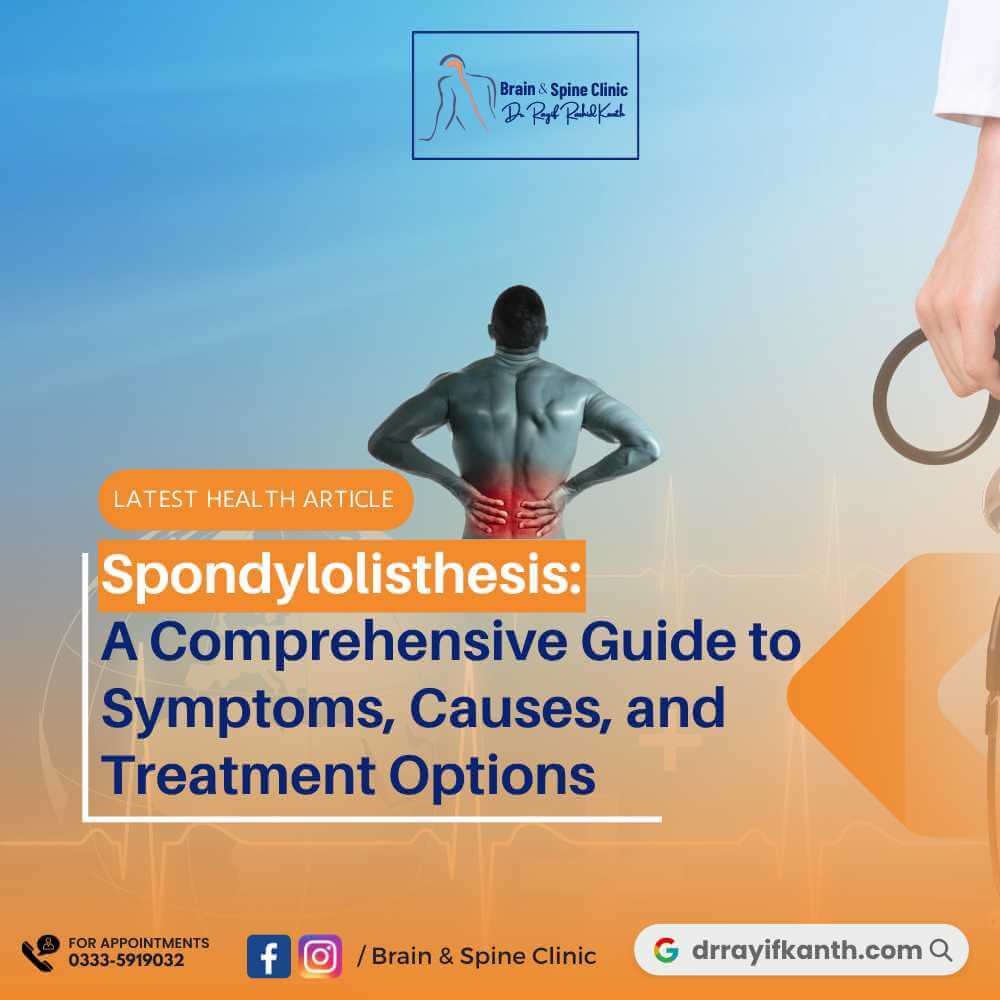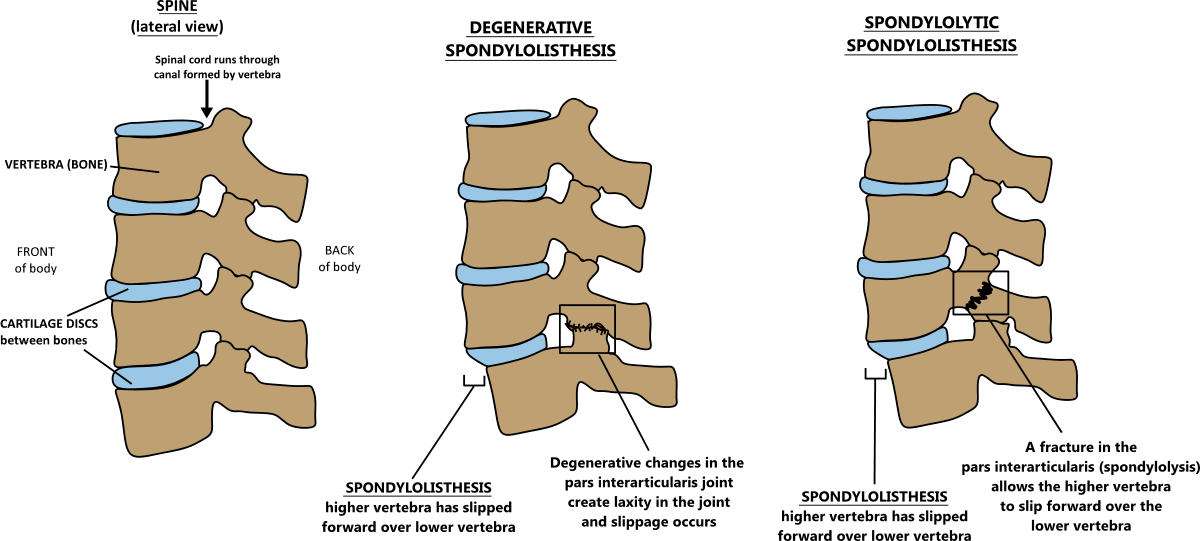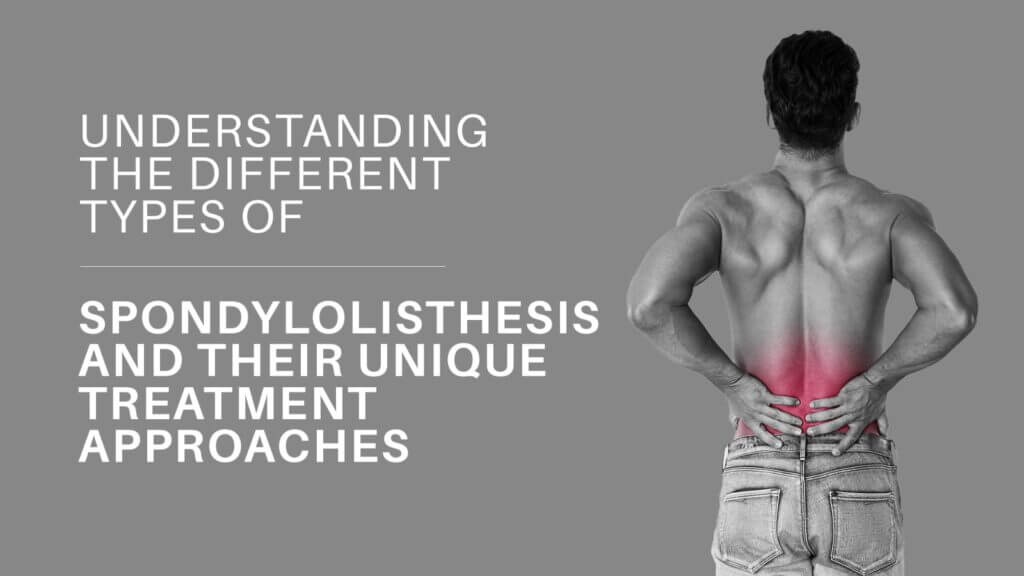
Quick information about Spondylolisthesis!
Spondylolisthesis is a condition where a vertebra, one of the bones that make up the spine, slips forward onto the vertebra below it. This can cause pain, numbness, and tingling in the back and legs.
The symptoms of spondylolisthesis can vary depending on the severity of the condition. Some people may have no symptoms at all, while others may experience pain, numbness, and tingling in the back and legs. Other symptoms may include weakness in the legs, difficulty walking, and problems with bladder or bowel control.
There are a number of causes of spondylolisthesis, including:
Degeneration of the spinal discs, Spondylolysis, Injury, and Birth defects etc
Spondylolisthesis is usually diagnosed with an X-ray or MRI of the spine. These tests can show the doctor if a vertebra has slipped forward.
The treatment for spondylolisthesis will depend on the severity of the condition and your symptoms. In some cases, no treatment is necessary. If you are experiencing pain, your doctor may recommend over-the-counter pain relievers, physical therapy, or injections. In severe cases, surgery may be necessary to stabilize the spine.
Dr. Rayif Rashid Kanth is Pakistan’s leading brain and spine specialist with around 15 years of experience in treating problems related to brain and spine with 100% success.
What is Spondylolisthesis?
Spondylolisthesis is a condition in which one vertebra slips forward over the vertebra below it. Grade 2 spondylolisthesis refers to a moderate degree of slippage, where the forward displacement is between 26% and 50%. The treatment approach for grade 2 spondylolisthesis depends on several factors, including the severity of symptoms, the degree of slippage, the presence of neurological complications, and the individual’s overall health.

Grade 2 spondylolisthesis and it’s causes:
In grade 2 spondylolisthesis, between 25-50 percent of the vertebral body slips forward. The causes of spondylolisthesis vary. Some people are born with a defective vertebra that may not be identified until much later in life. Others experience an injury to the back either repeatedly or on one occasion only.
Treatment options for spondylolisthesis:
Conservative treatment options for grade 2 spondylolisthesis may include:
Non-surgical Treatments:
- Rest and activity modification: Avoiding activities that exacerbate symptoms, such as heavy lifting or high-impact exercises, and incorporating periods of rest to alleviate pain and discomfort.
- Medications: Nonsteroidal anti-inflammatory drugs (NSAIDs), such as ibuprofen or naproxen, can help reduce pain and inflammation. Muscle relaxants or analgesics may be prescribed for short-term relief.
- Physical therapy: A physical therapist can develop an exercise program to strengthen the muscles supporting the spine, improve flexibility, and promote better posture. They may also provide manual therapy techniques and modalities for pain relief.
- Bracing: In some cases, a brace may be recommended to provide additional stability and support to the spine, particularly if there is significant pain and instability.
- Medications: Nonsteroidal anti-inflammatory drugs (NSAIDs), such as ibuprofen or naproxen, can help reduce pain and inflammation. Muscle relaxants or analgesics may be prescribed for short-term relief.
- Physical therapy: A physical therapist can develop an exercise program to strengthen the muscles supporting the spine, improve flexibility, and promote better posture. They may also provide manual therapy techniques and modalities for pain relief.

If conservative treatments are ineffective or if severe symptoms persist, surgical intervention may be considered. Surgery aims to stabilize the spine, alleviate nerve compression, and reduce pain. The specific surgical approach will depend on various factors, including the location and extent of the slippage, as well as the surgeon’s expertise.
Surgical Treatment :
Common surgical procedures for grade 2 spondylolisthesis include:
- Decompression: This involves removing any bone or tissue compressing the nerves in the affected area, such as a herniated disc or bone spurs.
- Spinal fusion: In this procedure, the surgeon fuses the affected vertebrae together, eliminating the slippage and promoting spinal stability. Bone grafts, along with instrumentation such as screws, rods, or plates, are used to facilitate fusion.
The decision to pursue surgery should be made in consultation with a spine specialist based on a thorough evaluation of the individual’s symptoms, imaging studies, and overall health. They will be able to provide personalized recommendations and discuss the potential risks and benefits of surgical intervention.
Do you need help?
Are you suffering from any kind of pain related to brain and spine?